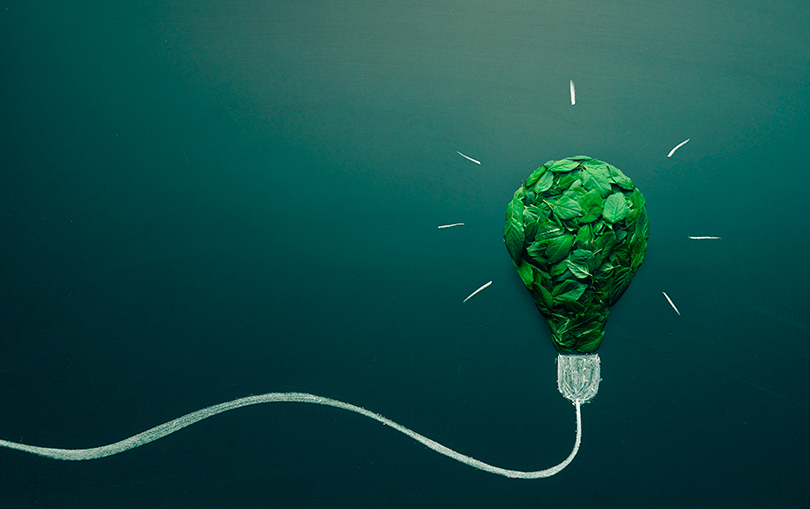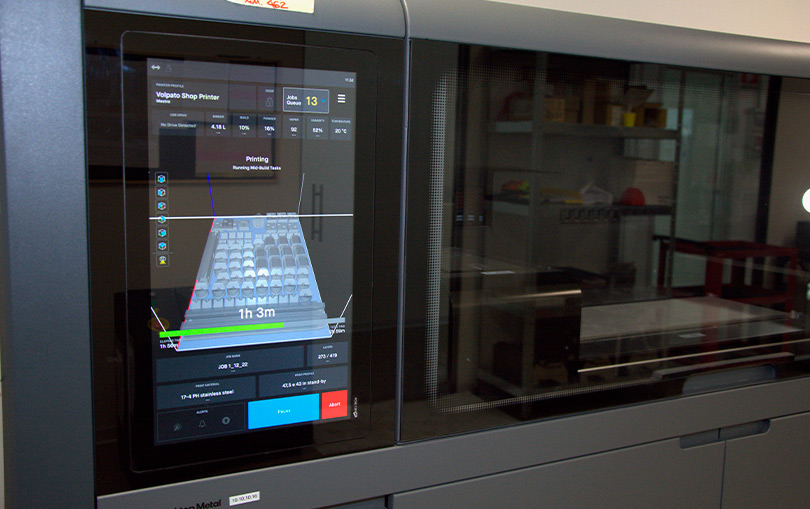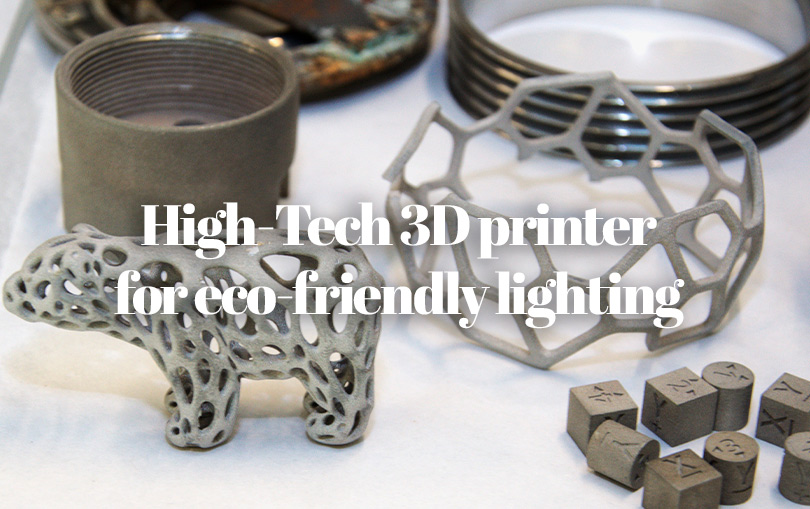HIGH-TECH 3D PRINTER FOR ECO-FRIENDLY LIGHTING
INNOVATION AND TECHNOLOGY AT THE SERVICE OF ENVIRONMENTAL SUSTAINABILITY

When it comes to innovation and technology, you can’t help to immediately think of the environment and of sustainability issues.
Although technology and the environment have had a conflicting relationship in the past, today, innovation and sustainability are more and more virtuously linked.
The 2030 Agenda for sustainable development has indicated very specific goals that can only be achieved by integrating technology to the environmental protection strategy and every company has the responsibility to identify how to adopt production systems that have a minor impact on the ecosystem and on people.
Patrizia Volpato has started an important journey regarding innovation within the production of its collections of lamps and chandeliers to respect the environment and be sustainable. A process, which is still being implemented and which passes through advanced technology, thus allowing the reduction of waste and the optimisation of energy consumption.
PRODUCTION OF CHANDELIERS AND LIGHTING FIXTURES WITH HIGH TECH AND LOW ENVIRONMENTAL IMPACT
In the history of Patrizia Volpato‘s company, the choice of raw materials and production processes has always been a focal point of its business model and an identifying element of its quality and craftsmanship. A winning choice that today also passes through the scrutiny of sustainability.
The Patrizia Volpato brand has embraced indications of the 2030 Agenda for a sustainable development and promotes Open Innovation for the introduction of new development paths thanks to the activation of an ecosystem made of research, innovation, and digitalization, with the aim of reducing waste, reusing materials, reducing CO2 emissions, recycling and raising awareness of suppliers, in order to promote a circular economy.
These changes, which are extremely important for the common good, are already ongoing in Patrizia Volpato, where:
- only energy deriving from 100% renewable sources is used.
- lead and hexavalent chromium have been eliminated from all products.
- all packaging materials are obtained from recycled or recyclable materials and FSC certified boxes (which use wood from forests correctly and responsibly managed according to strict environmental, social, and economic standards).
- footprint calculation is perfomed.
- CO2 emissions are compensated by planting 6 hectares of bamboo grove.
- a membership is honoured with the waste disposal consortium for the correct disposal of electrical and electronic equipment (WEEE).
- the customer is provided with detailed instructions for the correct disposal of the product.
- advanced technology and digitalization are used to reduce waste.
To these already ongoing changes others have been planned to include the construction of a photovoltaic roof to eliminate methane gas from the plant, the ISO 14001 certification for measurement and compensation also through the qualification of selected suppliers.
But, undoubtedly, among all of the changes taking place, one of the most important is the acquisition and implementation of a 3D printer for metalworking with the aim of optimising non-renewable resources.
THE ROLE OF 3D PRINTING IN THE LIGHTING AND LUXURY GOODS SECTOR

The advanced technology of 3D metal printing offers many benefits, both from a qualitative as well as from an innovative point of view, allowing pinpoint accuracy, saving of raw materials and recovery of waste materials.
But how exactly does a 3D printer work?
Patrizia Volpato has implemented its systems with a binder jetting 3D printer, which through the jet of a liquid binder on a bed of metal powder, solidifies creating stratified transversal layers. This means that, starting from the project designed in the CAD software, the printer can recreate what was designed with extreme precision.
At the beginning of the printing process, one tank is filled with the metal powder, while a steel plate is placed in the other to serve as a base. The levelling roller distributes a first layer of powder on the surface and a head – like that of 2D printers – sprays the binding agent (binder) in the form of tiny droplets according to the coordinates of the CAD design. In this way, layer by layer, the piece is formed with maximum precision.
This 3D printing system offers many benefits, including:
- the ability to print large batches or quantities quickly and in a single run.
- maximum freedom as for the design.
- strength and ductility in accordance with the high standards required by ASTM and MPIF.
- maximum cost efficiency because it allows the ability to recycle excess powder.
- opportunities for reworking.
- wide variety of printable materials.
- reduction of the quantity of raw materials necessary for the production process already from the initial phase.
In the context of the production of lighting fixtures and luxury chandeliers, this technology actually allows any creative idea to be reproduced in an extremely sophisticated way.
Patrizia Volpato, in this sense, was ahead of times and, as far as Italy is concerned, is one of the few companies to produce with such technologically advanced systems.
A production system that Patrizia Volpato offers to companies to produce metal parts with a high degree of geometric complexity, especially in sectors such as cosmetics, luxury leather goods, jewellery, as well as in the production of objects or mechanical parts like golf sticks.
The use of the latest-generation technology in the production of handcrafted Murano glass or crystal chandeliers is the demonstration of how the value and merit of craftsmanship for traditional Venetian glassmaking combined with advanced technology, can give birth to real design excellence, in compliance with a production process that has a lower environmental impact yet always with a high quality level.
Contact us for more information on our 3D printer or if you are interested in getting a quote for the production of high-precision metal parts.
Patrizia Volpato, new forms of light.



